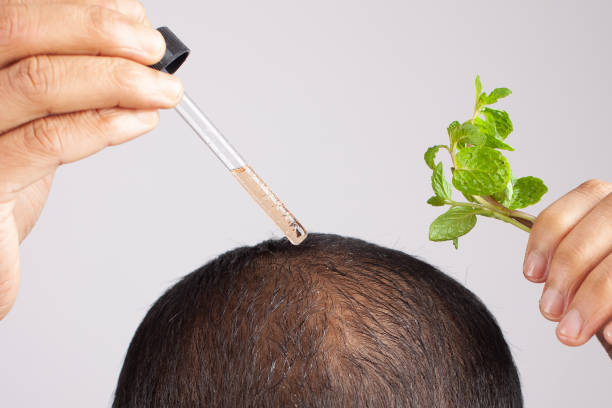
How to Choose the Right Varicose Vein Treatment for Your Needs
When it comes to managing varicose veins, the variety of treatment options available today offers both hope and challenges for individuals seeking relief. Whether the goal is to improve cosmetic appearance, alleviate pain, or prevent more serious complications, selecting the right approach depends on understanding the available options, their benefits, and which treatment aligns best with your unique needs. For those considering varicose vein treatment in New Jersey, it’s essential to navigate through the many choices and find the solution that offers optimal relief and lasting results.
Understanding Varicose Veins: Causes and Symptoms
Varicose veins develop when veins, typically in the legs, become enlarged, twisted, and dark in color. This condition often results from weakened or damaged valves within the veins that prevent blood from flowing back to the heart efficiently. As blood pools, it creates pressure within the veins, causing them to swell and become visibly distorted.
Common Symptoms of Varicose Veins
While some individuals may experience only mild discomfort, others endure symptoms that impact their quality of life. Typical signs of varicose veins include:
- Visible, bulging veins on the legs
- Swelling and aching in the legs, particularly after standing or sitting for long periods
- Itching or burning sensations around affected veins
- Skin discoloration or ulcers in severe cases
Key Considerations Before Choosing Varicose Vein Treatment
Before deciding on a treatment, it’s important to evaluate personal health goals, severity of symptoms, and lifestyle. Not all treatments are suitable for everyone, and consulting a specialist in vein management treatment in New Jersey is an essential first step in determining the most appropriate solution.
Factors to Evaluate
- Severity of Varicose Veins: Larger veins may require more invasive procedures, while smaller spider veins can often be treated non-surgically.
- Desired Recovery Time: Some treatments require minimal downtime, whereas others may need a longer recovery period.
- Cosmetic vs. Medical Needs: Treatment goals vary, from improving leg appearance to addressing serious medical concerns.
- Insurance Coverage: Verify if your insurance policy covers varicose vein treatments, as some options may be deemed elective or cosmetic.
Effective Varicose Vein Treatment Options
Today, there are a variety of procedures for addressing varicose veins, each offering unique benefits. Below is an overview of the most common and effective treatments.
Endovenous Laser Treatment (EVLT)
Endovenous laser treatment (EVLT) is a minimally invasive procedure in which a laser fiber is inserted into the affected vein, using heat to seal it off. This approach allows blood to be rerouted through healthier veins. EVLT is known for its high success rate and relatively low downtime, making it an appealing option for many.
Pros:
- Quick recovery time
- Minimally invasive with little discomfort
- Performed on an outpatient basis
Cons:
- May cause bruising or slight discomfort post-treatment
- Not ideal for smaller veins
Radiofrequency Ablation (RFA)
Similar to EVLT, radiofrequency ablation (RFA) also uses heat but relies on radiofrequency energy to close off damaged veins. This method is well-suited for larger veins and has a strong track record of success in reducing symptoms and improving appearance.
Pros:
- High success rate for larger veins
- Minimal pain and quick recovery time
- Effective long-term results
Cons:
- Less effective for smaller veins
- Can lead to temporary numbness or tingling in treated areas
Sclerotherapy
Sclerotherapy is a popular option for treating smaller varicose veins and spider veins. This non-surgical treatment involves injecting a solution directly into the vein, causing it to close and eventually disappear. It’s a quick procedure with minimal discomfort and is widely available in vein management treatment in New Jersey.
Pros:
- Non-invasive with no downtime
- Effective for spider veins and smaller varicose veins
- Simple and quick procedure
Cons:
- May require multiple sessions for best results
- May not be suitable for larger varicose veins
Ambulatory Phlebectomy
Ambulatory phlebectomy is a minimally invasive surgical option where problematic veins are removed through small incisions in the skin. It’s ideal for patients with larger, bulging varicose veins that cannot be effectively treated with non-surgical methods.
Pros:
- Immediate removal of visible veins
- Long-lasting results
- Minimal scarring when performed by an experienced surgeon
Cons:
- May require local anesthesia
- Slightly longer recovery time than non-surgical treatments
Compression Therapy
While not a direct treatment, compression stockings are frequently recommended to manage symptoms of varicose veins and prevent them from worsening. These specially designed stockings help improve circulation and are often prescribed as part of post-treatment care.
Pros:
- Helps alleviate pain and swelling
- Available in various compression levels for different needs
- Supports healthy blood flow in conjunction with other treatments
Cons:
- Does not eliminate varicose veins
- May not be sufficient for advanced cases
Choosing the Right Vein Management Treatment in New Jersey
For those seeking varicose vein treatment in New Jersey, a consultation with a vein specialist can provide insight into which option best suits your condition and lifestyle. Here are some tips to help guide your decision.
Assessing Your Treatment Goals
- Symptom Relief vs. Cosmetic Improvements: If you’re mainly seeking relief from pain and swelling, options like EVLT, RFA, or compression therapy may be ideal. For cosmetic improvements, sclerotherapy or phlebectomy could offer the best results.
- Long-Term Health Benefits: Treatments like EVLT and RFA not only improve vein appearance but also reduce the risk of complications associated with untreated varicose veins, such as blood clots and ulcers.
Discussing Potential Risks and Outcomes
Each treatment carries unique risks and recovery times, which a specialist can discuss in detail. Inquire about expected outcomes, potential side effects, and the likelihood of vein recurrence after treatment to make an informed decision.
Considering Follow-Up and Preventive Care
Post-treatment care, such as wearing compression stockings and following up with your doctor, plays a key role in ensuring lasting results. Regular check-ups allow your vein specialist to monitor vein health and recommend preventive strategies to reduce the risk of new varicose veins forming.
Preventive Tips for Long-Term Vein Health
In addition to choosing the right treatment, taking steps to improve overall vein health can help manage varicose veins and prevent them from worsening over time.
Maintain an Active Lifestyle
Exercise, particularly low-impact activities like walking, cycling, and swimming, promotes healthy blood flow and strengthens leg muscles. Staying active reduces pressure on your veins and improves circulation, helping prevent varicose veins from developing or worsening.
Elevate Your Legs
Resting with your legs elevated above your heart level encourages blood flow back to the heart, reducing pressure on leg veins. Elevating your legs at the end of the day can be particularly beneficial for individuals who stand or sit for prolonged periods.
Avoid Prolonged Sitting or Standing
Long periods of sitting or standing can put strain on leg veins, increasing the risk of varicose veins. If your job requires extended periods in one position, try to take breaks to stretch or move around periodically to promote blood flow.
Maintain a Healthy Weight
Carrying excess weight places additional pressure on your veins, potentially worsening varicose veins. Adopting a balanced diet and regular exercise routine can help you maintain a healthy weight, reducing the strain on your circulatory system.
Finding the Best Varicose Vein Treatment in New Jersey
In New Jersey, a variety of clinics and specialists offer advanced solutions for managing and treating varicose veins. Choosing a reputable clinic with experienced vein specialists can ensure high-quality care and better outcomes.
Steps to Take When Selecting a Vein Treatment Provider
- Research Clinic Reputation: Look for clinics with a track record of positive patient outcomes and reviews. Many reputable clinics offer information on their websites about their staff’s credentials, patient testimonials, and treatment success rates.
- Check Specialist Credentials: Ensure that the provider is certified in venous and lymphatic medicine, and inquire about their experience with the treatment options you are considering.
- Schedule a Consultation: Meeting with a specialist allows you to discuss your concerns, review your symptoms, and learn more about the best treatment options available.
Varicose veins can impact both comfort and appearance, but with the right treatment and preventive care, you can manage this condition effectively. By consulting with a specialist in vein management treatment in New Jersey and exploring various treatment options, you can find relief and enjoy healthier, more vibrant legs.



